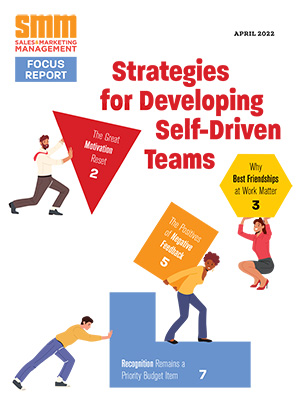
Greg Alexander, CEO of Sales Benchmark Index, a B2B sales and marketing consulting firm, hosts a monthly Web TV show in which he interviews top-performing sales executives. Recently, he spoke with Todd Cione, chief revenue officer at Rackspace, the top global provider of cloud computing services, on the topic of building a team of A players. Here are some highlights from the Cione interview, which can be viewed in its entirety at salesbenchmarkindex.com/blog:
Cione on recruiting the right people: Planning is the start of success. We have a talent management framework in place and the first couple pillars are planning and then hiring. The plan is critical. It dictates the type of job descriptions you need and what the ideal candidate profiles are. We’ve spent some time building those out by job type. There are a lot of different roles, a lot of different job descriptions per role and a lot of different ideal candidate profiles associated with those job descriptions.
The best people are often not looking for a job:
There are certainly some anomalies where strong talent gets put into the marketplace for a variety of reasons, but passive candidates, without question, are typically the highest and most targeted folks we go after. If you go to market with a product or service and you don’t have a strong value proposition that’s really clear, you aren’t going to be successful. It’s the same in recruiting. If you don’t have a strong, clear value proposition for level A talent, you’re going to struggle. It’s important for our leaders to understand what a value prop for an employee is and ensure that our recruiting team knows that as well.
Collaboration and its correlation to sales success: Gone are the days of an individual being successful working on their own. We have a broad product and services offering, so we have specialists that a seller has to work with to be successful. If you cannot effectively communicate and collaborate with other people, you’re just not going to be successful.
The onboarding process: We use three primary components – learning through training, learning through mentoring and learning through experiences. We found that visually seeing and engaging with someone who does your job well is really important for onboarding. And putting an individual into experiences where they can see what is expected of them in action is also really important.



